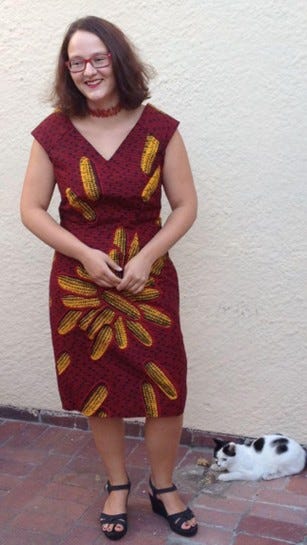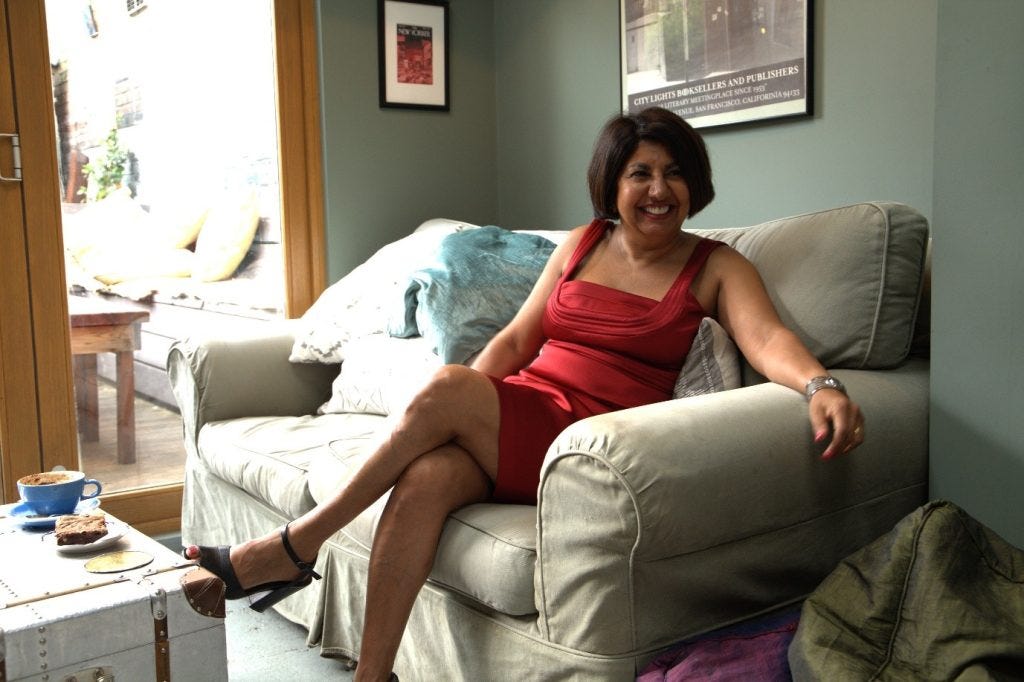Dislocation and Distress through Dress
by Nica Cornell
Dressing for the International Students Orientation at the University of Oxford in 2018, I noted that my cotton panties had a hole. The contrast of this ordinary intimate detail with the towering architecture and glittering reputation was overwhelming – even before the plaque to self-proclaimed imperialist and white supremacist Cecil John Rhodes.
Rhodes Must Fall: ‘None of that Rhodes nonsense from you.’
I was told there would be many formal events so I packed my most glamorous and precious clothes:
the raw silk tiered ballgown a family friend had lovingly created for my high school dance
the silver sequined evening dress my mother bought me for my graduation ball
the tailored Ankara fabric dresses from DRC, Ghana & Togo.
The stain-glass windows commemorated alumni as though saints – Rhodes included. I was seated next to the Provost. He took his seat, asking where I was from. On hearing my nationality, he quipped, “None of that Rhodes nonsense from you.”
I grew up off Rhodes Avenue. I went for forest walks in Rhodes Memorial. I took school trips to Rhodes Cottage where the man enjoyed the peaceful death he denied others. My university bore his name – and refused to give it up, despite our activism.
How to explain this to the leader of my new College - paying for my degree in a foreign country - to this man who thinks he is amusing? I did my best. But my Ankara dress was suddenly too tight.
Matriculation at Oxford
The VC spoke Latin then proclaimed, “You are now members of Oxford University for life.” I thought, “I’m not sure I want to be.” New students queued in the rain, waiting to cram in for the brief cult-like ceremony.
I was wearing the sub fusc outfit we had to buy. There were few people of colour, including the Ugandan who said I was the first person he met who knew his country existed. I walked across the courtyard and a man in a three-piece tweed suit barked, “We do not walk on the grass.”
Living with Complex Post Traumatic Stress
Legally, in the UK, my mental illness designated me disabled. I first accepted that on the forms I completed to ensure proper support was in place. Every promise made was broken.
My body disappeared as another swam into view. This new body had multiple, unpredictable, panic attacks a day and hot flushes. Layers had to be stripped off to breathe. Its hands trembled. It had to be rescued by strangers from the middle of the road. It could not go anywhere alone. Noise was unbearable, rendering it frantic. It stuttered. It stretched as movement became harder, and cooking required standing. It swam in a too tight navy one-piece to regulate breathing - one day it simply sank.
Joanne Entwistle said, “Our bodies are not just the place from which we come to experience the world, but it is through our bodies that we come to be seen in the world.” This new body was always unsafe. Thus, I wished not to be seen – because invisibility is safe, and I am ashamed. Entwistle wrote that in Western society, “The body has become part of a project to be worked at, a project increasingly linked to a person’s identity of self.” I failed at this project. She wrote, “Dress is the way in which individuals learn to live in their bodies and feel at home in them.” But I was not at home in this body, ever.
A Community Campaign: Elegance in Ealing
My degree was suspended to save my life. I comforted myself with the accoutrements of dress. We bought a mannequin, named her Nicolette. I discovered the Oxford GP had exacerbated my condition with heavy doses of highly addictive tranquiliser. I volunteered at a charity shop and created a campaign of photoshoots promoting circular economy values and diverse beauty norms, styling local people in beautiful second-hand items. It was well received and shortlisted for an award.
Here Comes the Bride
After 8 months on a waiting list, I saw a psychiatrist. New medication helped. Massive noise cancelling headphones helped. I was told the Home Office would cancel my visa. We decided to get married. My brother’s visa was denied – I would know no-one from home. I ordered a dress online for the first time from a sample sale, three sizes larger than a year ago. The mist-coloured chiffon floated. The draped fabric swallowed the body I was still not at ease in. I bought teal velvet Steve Madden platform heels from the charity shop, and a matching scrunchy from Etsy. I ordered a birdcage veil because I still wanted to feel a bride and wore moonstone earrings I bought for my wedding with school prize money when I was 16. I made a bouquet from day-old flowers from Tescos, wrapped in a ribbon my mother sent from South Africa. It was the hem of my first dress. She had the dress made whole again with a new hem of Ankara fabric.
When I was hospitalised with major depressive disorder with remittent anxiety at 22, they told us we had to get dressed every day even if we spent the day in bed. My new book, Sickness in Style, reveals how dress is part of the stories we tell – even to ourselves.
How can dress impact a journey through disabling illness and recovery from South Africa to London?
Navigating the development of her complex Post Traumatic Stress Disorder from her home in South Africa, to university in Oxford, and recovery in London, author Nica Cornell uses the garments she travelled with to reflect on her experience. Cornell explores the effect of garments such as her Ankara sheath dress, Sub fusc, and second-hand clothing, and how they influenced her experience of alienation, exclusion, and realisation.
Sickness in Style explores the challenges of dressing and how it can become an obstacle to accessing the external world, as well as how beauty can be rediscovered through second-hand outfits. This book is ideal reading for students of Fashion Studies, Disability Studies, Psychology, and Migration Studies.
We want our books to be available to as many people as possible. If you'd like to purchase an individual copy, please email us and we'll give you a discount code: Request Discount Code
IMAGE CREDITS:
Header and Figure 1 Credit: Nica Cornell
Figure 2 Credit: Nica Cornell
Figure 3 Credit: Nica Cornell (Elegance in Ealing campaign)




